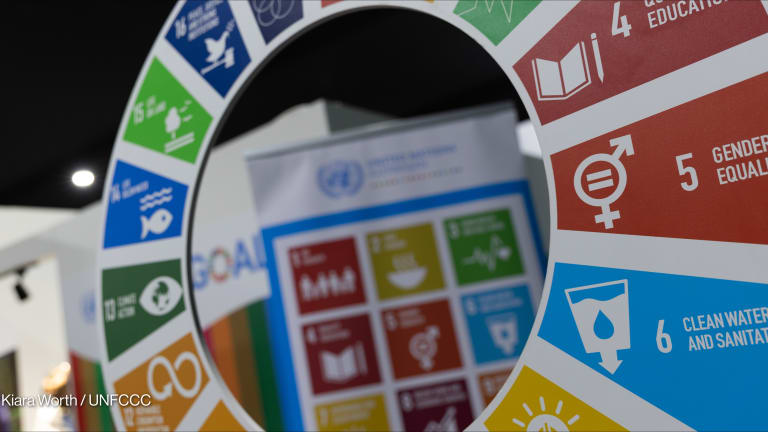
Apps. Crowdsourcing. Online mapping. Open source. These are just some of the buzzwords on nearly every politician and aid practitioner’s lips at the recently concluded Social Good Summit. But what do these terms mean for the international development community?
Crowdsourcing and open-source software have enabled residents of what is believed to be the largest slum in Africa — Kibera in Kenya — to map their community and help U.N. and aid agencies, and various nongovernmental organizations working there figure out what type of assistance is needed and where. This is according to David Kobia, co-founder and director of technology development at Ushahidi, an open-source software project participants tapped to create Map Kibera.
Ushahidi, or testimony in Swahili, is a global crowdsourcing and mapping nonprofit that also offers consulting services to organizations that include the World Bank and the United Nations. Aside from Map Kibera, the organization’s Crowdmap platform has been used to help people in countries such as Japan, Australia, the United States, Haiti, Chile and Russia navigate through natural disasters.
Kobia spoke with Devex on the sidelines of the Social Good Summit about different technological advancements and trends that he thinks will influence the delivery of aid and sustainable development. Here’s what he means.
How do you think open-source software is changing the way aid organizations and multilateral organizations are doing business right now?
It’s easy to get into [open-source software] because it’s free. And beyond being just free, there are communities built around open-source software. But … it’s a little bit more difficult for [established, organized organizations] to get into it because of relationships they have with corporations like Microsoft. Half of the United Nations is deeply entrenched in Microsoft-based software.
Do you think it is necessary for all of these organizations to be using open-source software to gain the visibility they need to put their message out there?
I think it’s necessary. There are established communities of open-source software developer folks and a lot of times they are really, really big — if you think of the OpenLayers and a lot of OpenStreetMap, especially, because these are open community-aggregated and generated. … If you buy into the paradigm of crowdsourcing, you need the crowd. You have to move quickly and to respond to this huge torrent of data that is being generated daily and the only way to do that is … with open-source software.
What are the next frontiers that you see in open-source software, and how should the international aid community be thinking more about approaching them?
I can’t say enough how much I love OpenStreetMaps. They are important because it is impossible for one organization [to accomplish the same effect] unless you have unlimited funding. Google has close to unlimited funding. But [Google maps doesn’t] have points of interest in local communities out in some of these smaller countries, and things are changing all the time. Churches are moving. Hospitals are moving. You need local people involved to keep things like maps, especially, updated.
I love one project called Map Kibera, which is the biggest slum in Kenya, perhaps in Africa. People went in there and mapped every single clinic, money transfer, every police station, and that was done through something like OpenStreetMap.
What are other tools you can anticipate coming onto the scene that we haven’t seen a lot of yet?
The next big thing is getting into open hardware … a really cheap, easy way to get into building actual tangible devices. They are especially useful … with things like sensors. [Monitoring water pollution] is no longer something that is within the sector of a huge organization or a government. This is something that average citizens can now get into. The hardware is getting cheaper and easier to play with.
Just to illustrate: Recently we had a hackathon in New York … so we were building the sensors …, planting them in the river and we were having [the sensors send data] constantly. So imagine something like this combined with local communities around the Gulf of Mexico, for instance, after the oil spill. You are monitoring how the communities are impacted by the oil spill, but not only that. You are taking it a step further and actually physically monitoring water conditions, or it might be air conditions somewhere, but there are so many options.
I’m very optimistic about where that is headed. Because I think apps — while apps are really cool in developing countries, apps don’t really help people. [What we need are] regular people … building their own physical devices.
Stay tuned for more coverage from this year’s Social Good Summit, and check out our conversations with other global development luminaries attending the event.








